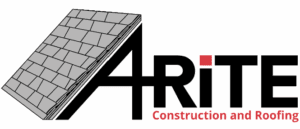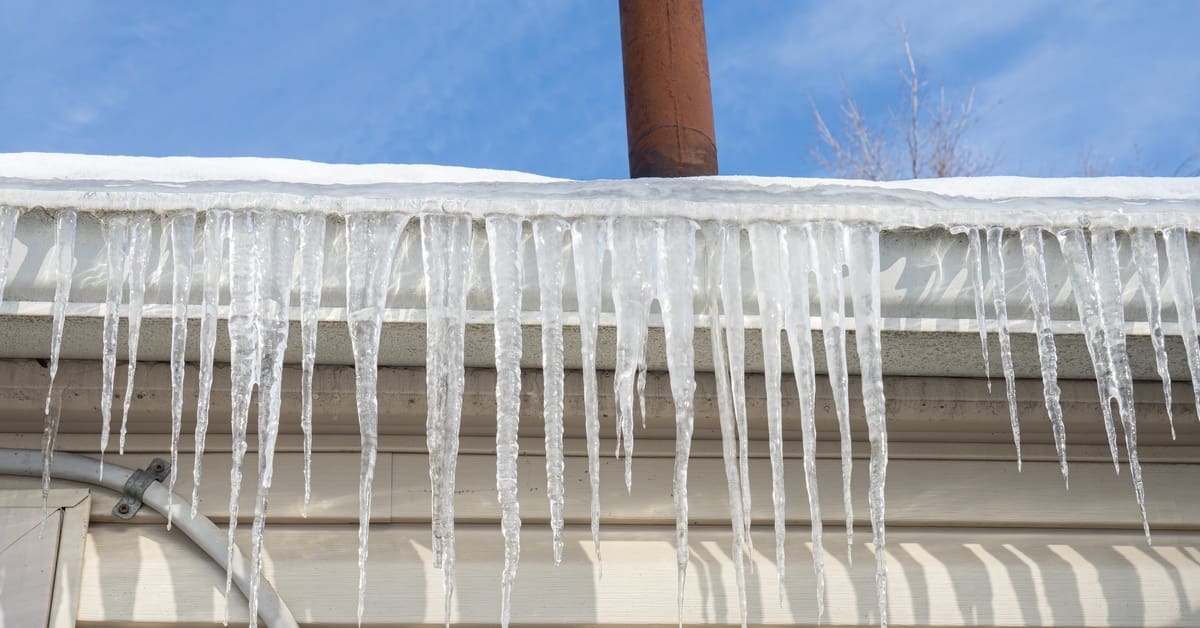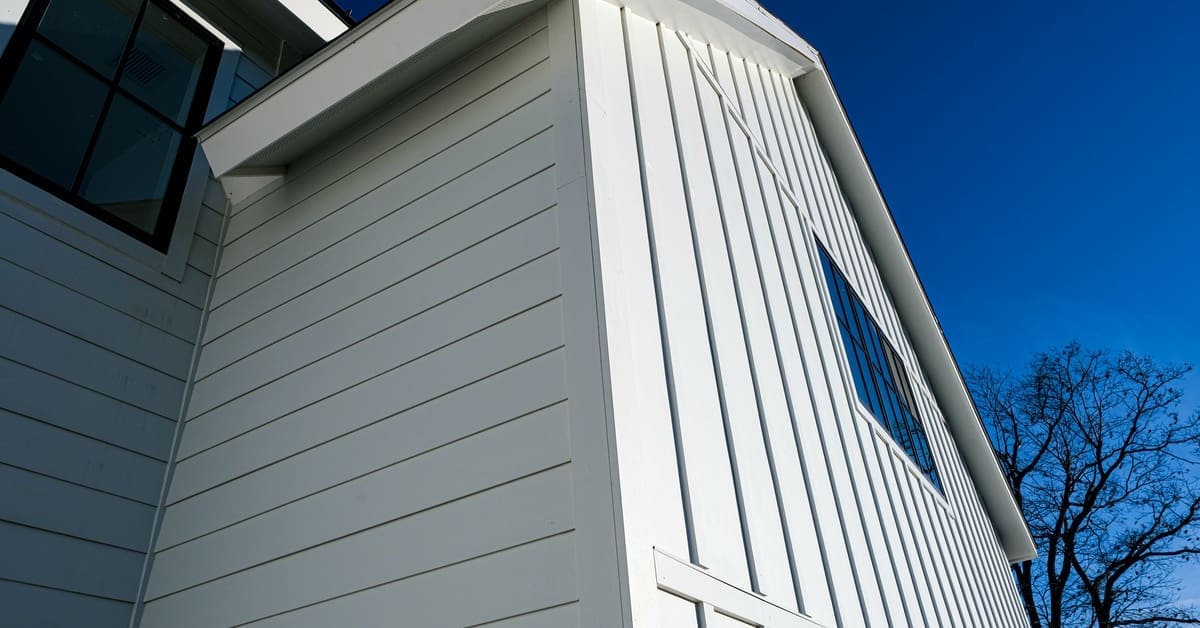Ice dams form when warm air from the attic causes snow on the roof to melt. The water then refreezes along the colder roof edges. As the water backs up behind the ice, it also begins to seep beneath the shingles, damaging the layers below.
However, the problem with ice dams is how that damage accumulates quietly. Spotting early signs of ice dams before they worsen is the simplest way to protect your home—and your budget—during the cold Wisconsin weather. Here’s what to watch for, starting with the signs that appear inside your home.
Water Stains on Ceilings or Walls
Discoloration near the top corners of walls or along ceiling edges often points to water intrusion. The stains tend to show up as gray, brown, or yellow rings and may come with cracking, bubbling paint, or a chalky, powder-like texture. If you notice these marks in rooms just below the roofline, particularly along exterior-facing walls, it’s worth investigating further.
Stains like these appear a few days after a warm spell follows substantial snowfall. Wausau’s freeze-thaw cycles can occur multiple times throughout the winter. Don’t assume a single stain is minor or unrelated. Left unaddressed, a seemingly surface-level issue could lead to mold growth, drywall damage, or electrical hazards inside ceiling cavities.
Mildew Smell in the Attic
Sometimes the first sign of trouble isn’t something you see; it’s something you smell. A musty, damp odor in the attic is an early warning that moisture is present but hidden. Typically, this occurs when snowmelt from a developing ice dam seeps beneath roofing materials and lingers just below the surface.
The smell tends to be the strongest in enclosed attic spaces with little air circulation. You might notice it after entering the attic on a calm day or while retrieving stored items. Even without visible leaks or staining, this scent can indicate that mold has started forming in unseen areas, such as roof decking, sheathing, and attic corners.
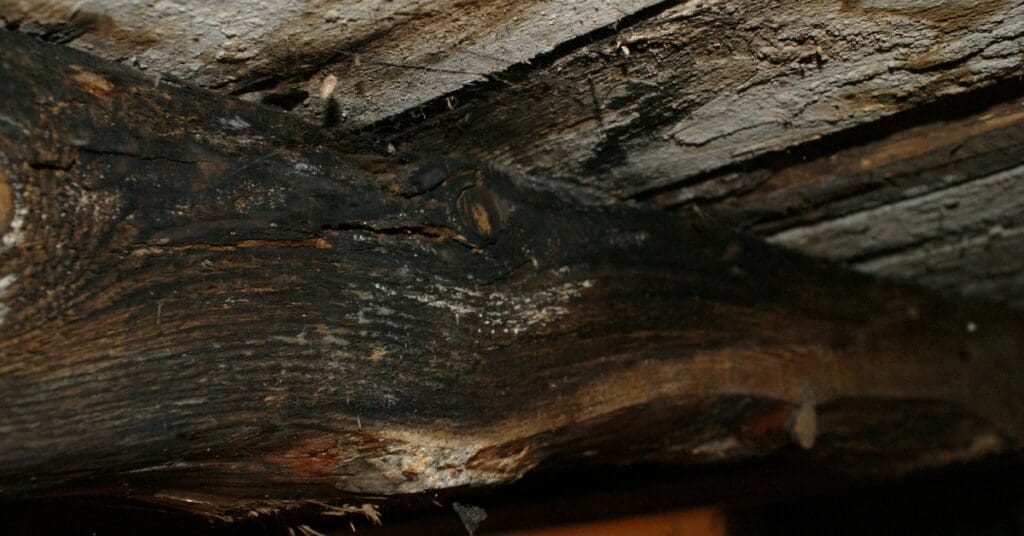
Condensation on Insulation or Rafters
Moisture inside the attic doesn’t always come from the roof; it can form from within the house. During the day, warm air rises and escapes into the attic through unsealed penetrations or inadequate insulation. When this moist air meets cold surfaces, like rafters or roof sheathing, it condenses and leaves behind water droplets or dark moisture stains.
Check for condensation during daylight hours, when attic temperatures rise slightly. You might see fine droplets on fiberglass insulation or glistening patches on exposed wood. Over time, moisture reduces the insulation’s efficiency and increases the attic temperature enough to trigger snowmelt on the roof, feeding the ice dam cycle from within.
Dark Streaks or Ice Inside Vents
Attic vents and exhaust ducts, particularly from bathrooms or dryers, can reveal how well your attic is managing heat and moisture. So, if you notice dark streaks around vent hoods or small icicles forming inside vent openings, it’s a clear sign that warm, moist air is escaping where it shouldn’t be.
Streaks and icicles occur because of uninsulated or disconnected ducts. Humid air leaks into the attic instead of exhausting outdoors. The trapped heat not only contributes to uneven roof temperatures, but it also accelerates the melting and refreezing that causes ice dams. Even small leaks can create enough moisture to fuel mold growth and degrade attic materials.
Uneven Snow Melt on the Roof
An uneven snow pattern across your roof is often the first outdoor clue that something’s wrong. After a storm drops four inches or more, the roof should hold snow evenly across its surface, especially if temperatures stay below freezing. But if you notice bare patches alongside snow-covered ones, it’s likely due to uneven heat escaping from the attic.
Homeowners see this most clearly one to two days after temperatures rise above 32 degrees Fahrenheit during the day, specifically on roofs with poor insulation near vents, light fixtures, or unsealed attic bypasses. The melted areas usually align with these warm spots and can kickstart the freeze-thaw process that leads to ice dam formation at the roof’s edge.
Ice Forming at the Roof’s Edge
A clean row of thick ice near the eaves is, perhaps, the most visible warning sign of an ice dam. While decorative icicles can form during freeze-thaw cycles, a solid, horizontal ridge of ice that hugs the edge of the roof is a clear sign of blocked drainage. That ridge traps additional meltwater behind it, creating a pool that slowly forces its way under the roofing materials.
As a result, interior damage becomes more likely, especially if the ice ridge continues to grow. As soon as you find buildup more than an inch thick or that stretches across multiple feet of roofline, call an ice dam removal company. Otherwise, your home may experience leaks, rot, or insulation damage.
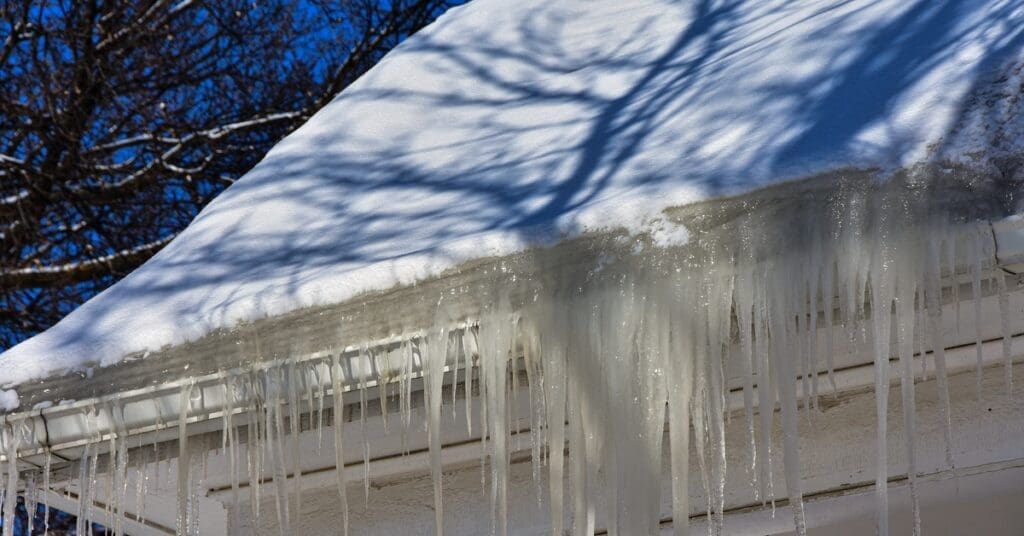
Sagging or Detached Gutters
When gutters begin to pull away from the roofline or appear to sag between fasteners, there’s a good chance ice has built up inside them. While this isn’t usually an early sign, it is a more common sign homeowners discover come mid to late winter, after multiple cycles of snow, melt, and refreezing.
Ice damage doesn’t impact water drainage alone. Unfortunately, ice buildup can cause the fascia boards to pull away from the roof, dislodge drip edges, and allow water to seep behind siding panels. If left unaddressed, it may even cause parts of the gutter system to collapse under the strain.
Icicles Hanging from Unusual Areas
Icicles don’t always form where homeowners expect. So, when you see icicles dripping from siding seams, above doorways, or from the undersides of overhangs, it could mean that water is making its way into places it shouldn’t be.
These out-of-place icicles usually appear after a minor thaw, when meltwater follows the path of least resistance behind exterior materials. Because there’s hidden damage, homeowners often miss the seriousness of this sign.
Never assume these icicles are harmless; they’re often the result of moisture escaping behind your roof’s protective layers.
Damage That’s Worse Than You Think
Spotting early signs of ice dams before they get worse can save you from more than a headache; it can help you avoid significant structural and energy-related damage. Behind the scenes, water can saturate attic insulation. This reduces the insulation’s effectiveness and raises heating bills. Over time, moisture leads to mold inside wall cavities, warped wood framing, and long-term wear on the home’s structure.
One last sign worth watching for is water dripping from soffit vents or roof overhangs, particularly during a sunny afternoon thaw. It commonly means that there’s trapped water inside the roof assembly and the water needs to escape. That’s not surface melting; that’s hidden runoff leaking out.
If you’re concerned about roof damage, ice buildup, or early warning signs, reach out to A-Rite Construction. We bring years of exterior renovation experience to Wausau, WI, homes and are proud to be GAF Master Elite, Owens Corning Top of the House Certified, and VSI Certified.
A-Rite Construction helps homeowners protect their properties before winter wear turns into spring repairs. Call us today to schedule a consultation.

